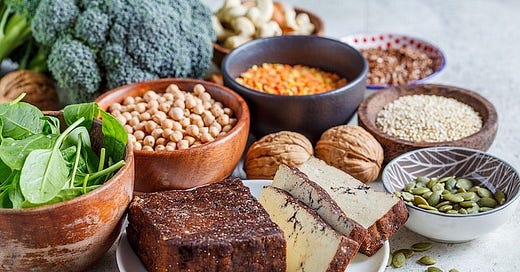Keep calm and have some plant-based protein
"Where do you get your protein?" is a question that persists and deserves a sincere answer
Chances are if you’ve gone vegan and announce it to a non-vegan you’ve been asked, “How do you get your protein?” Some longtime vegans roll their eyes at having to endlessly explain their protein sources.
In all these years that I’ve been writing and speaking about the vegan way of eating and living, I’ve gotten this question a lot. But I’ve rarely felt …
Keep reading with a 7-day free trial
Subscribe to The Vegan Atlas to keep reading this post and get 7 days of free access to the full post archives.



